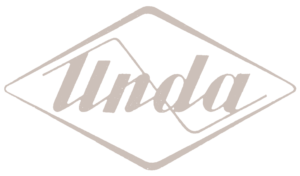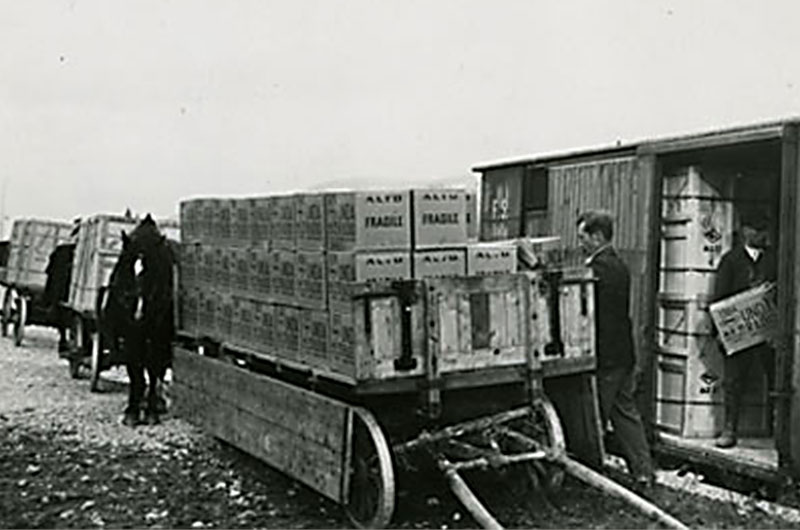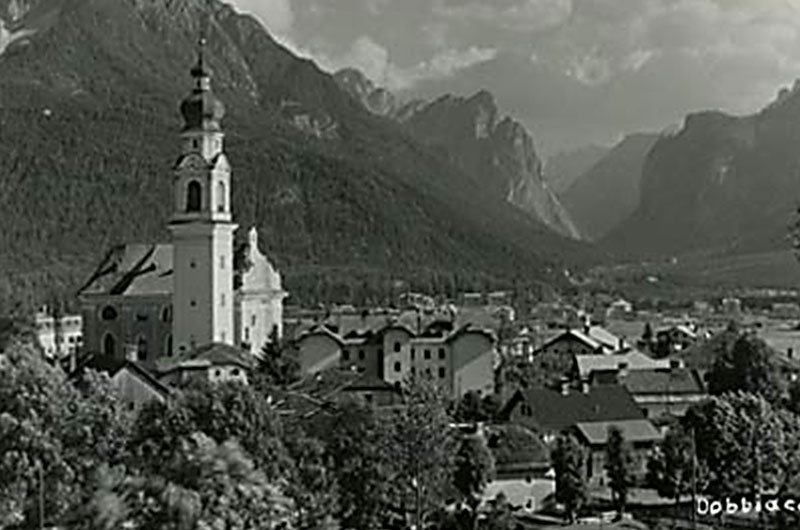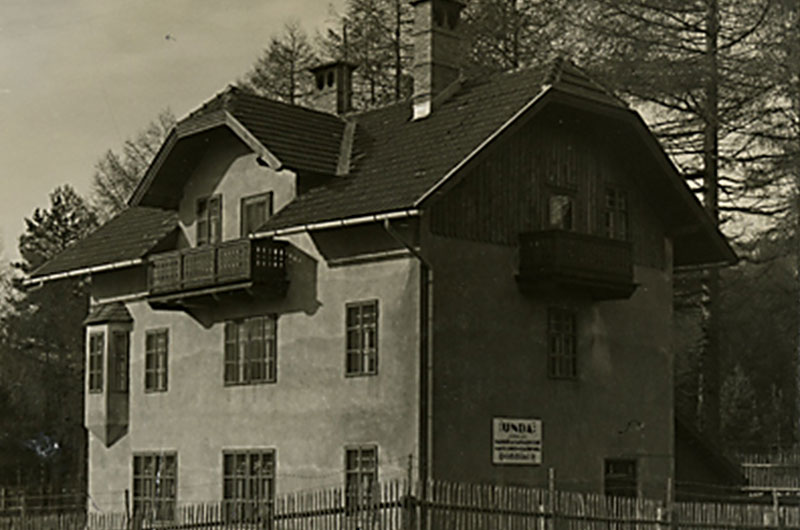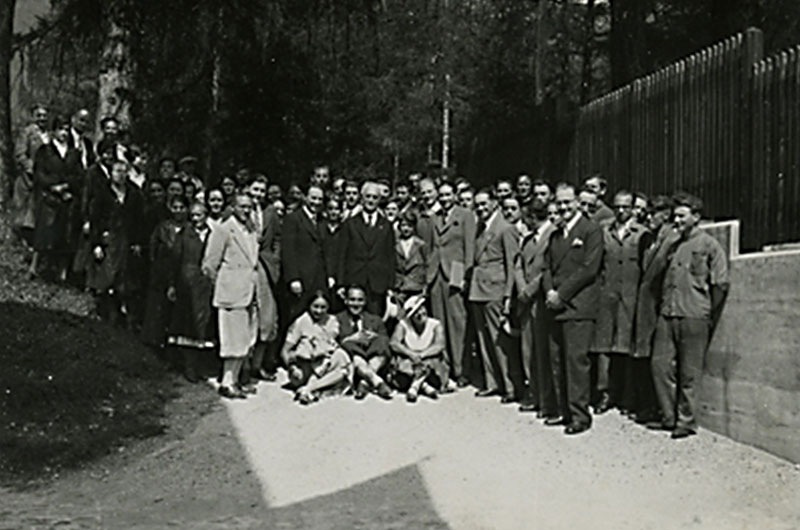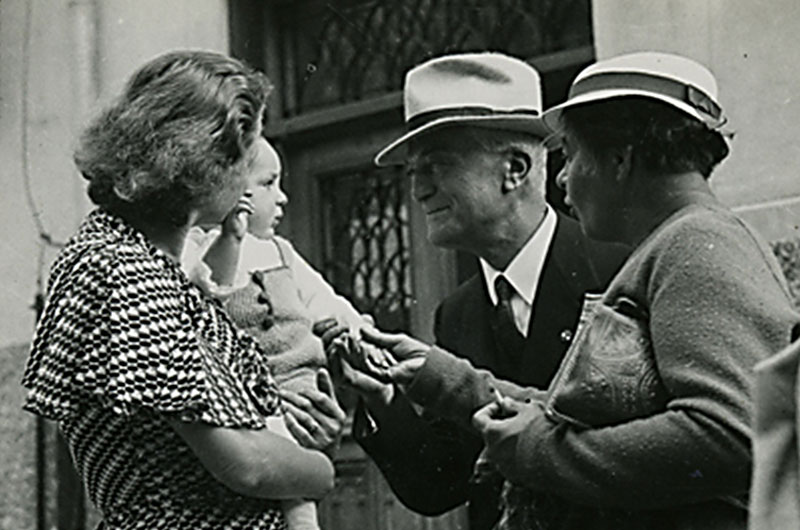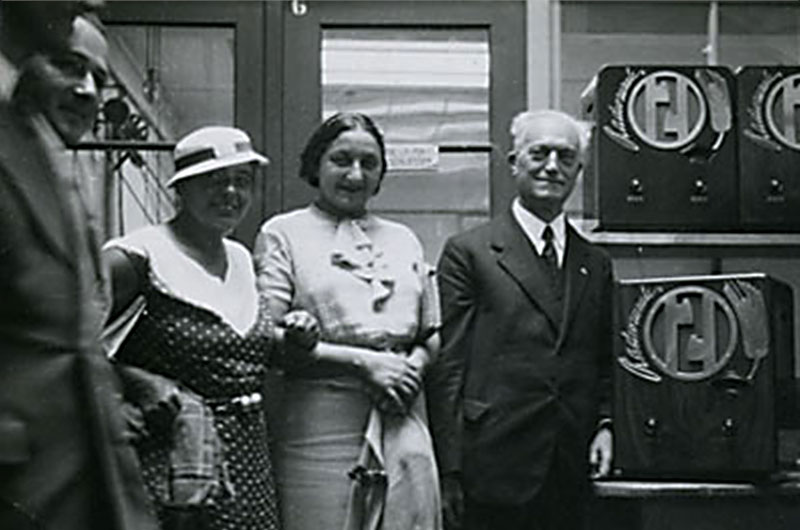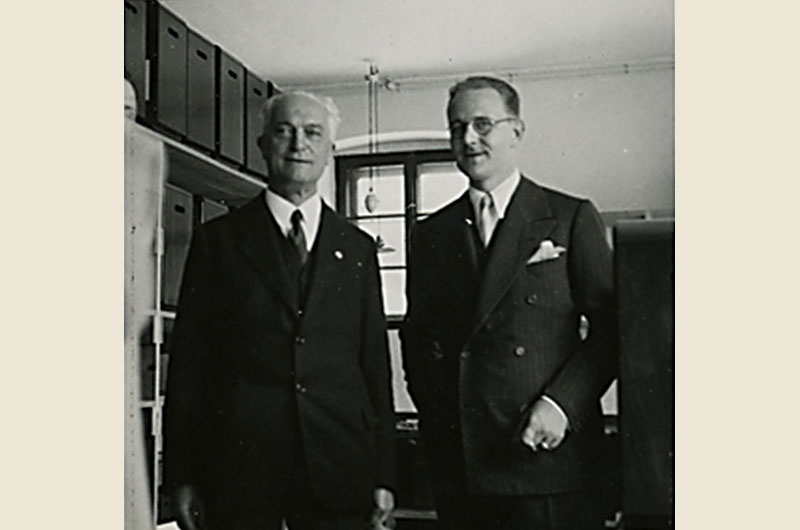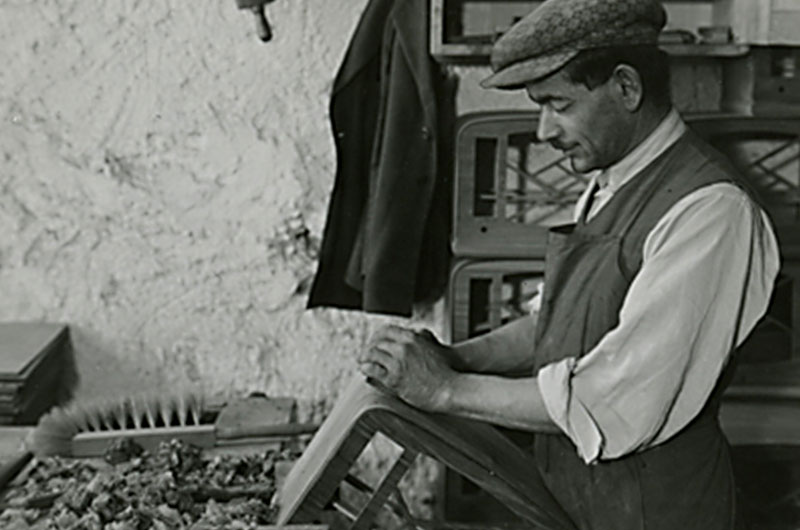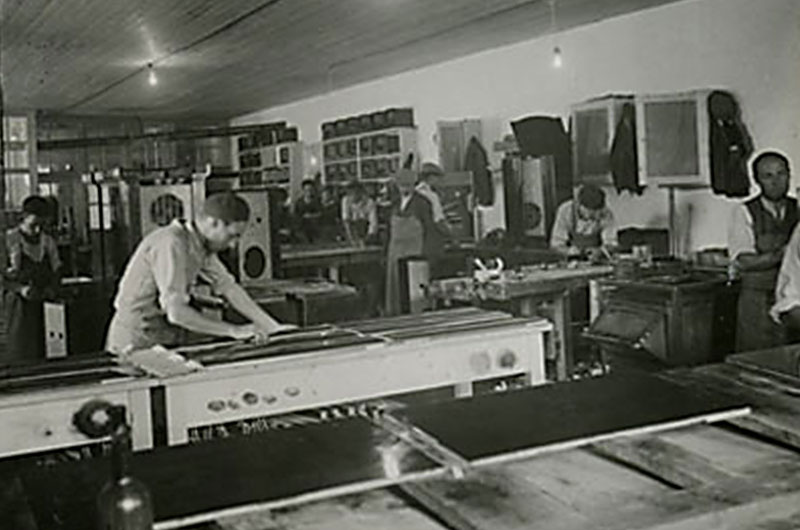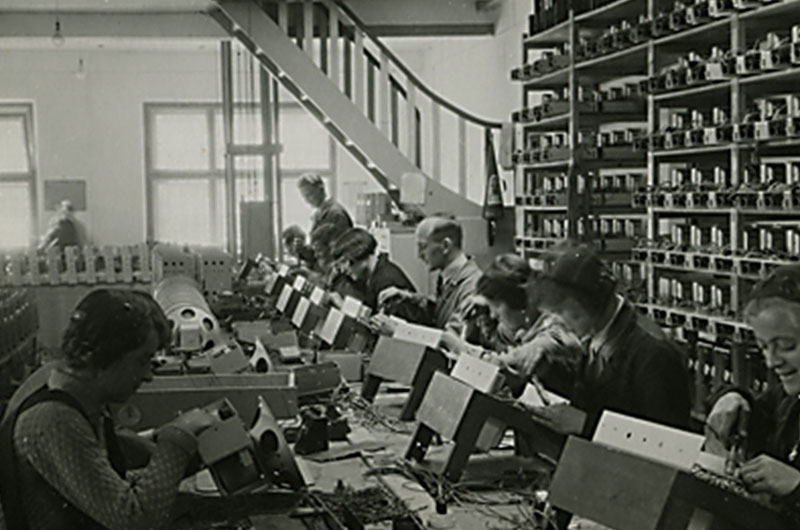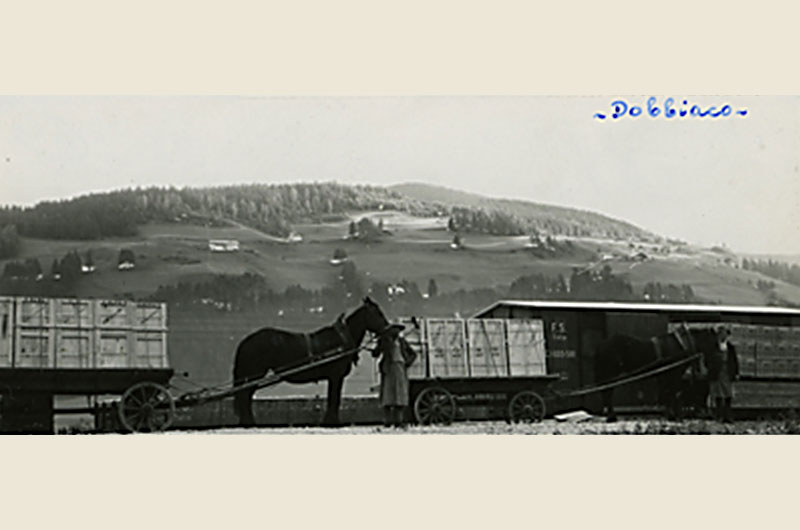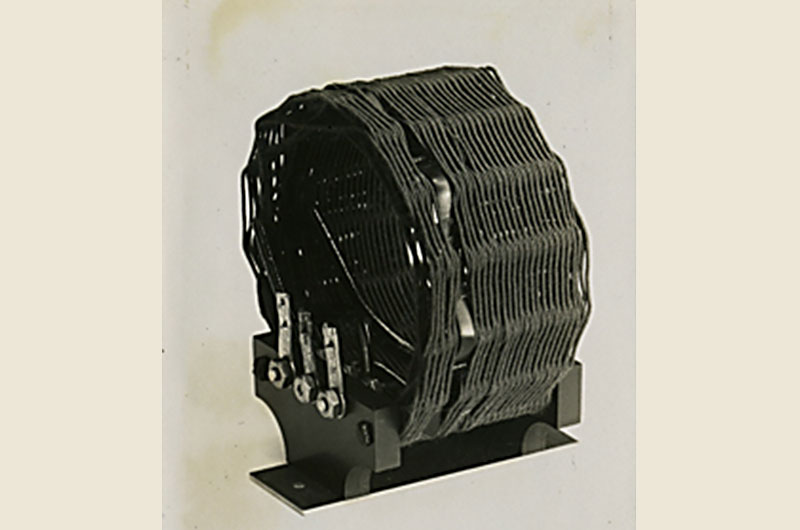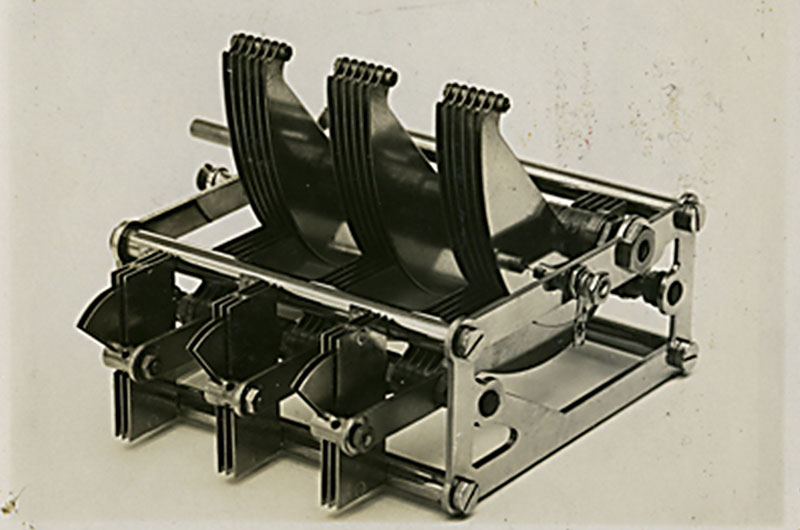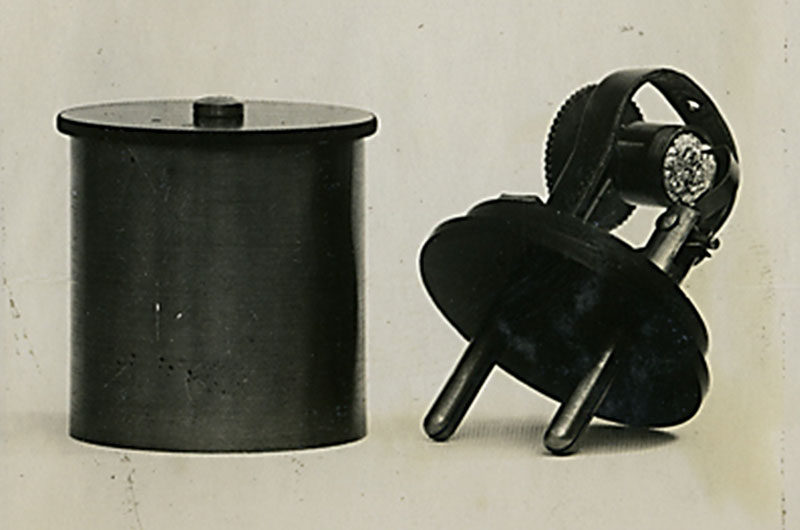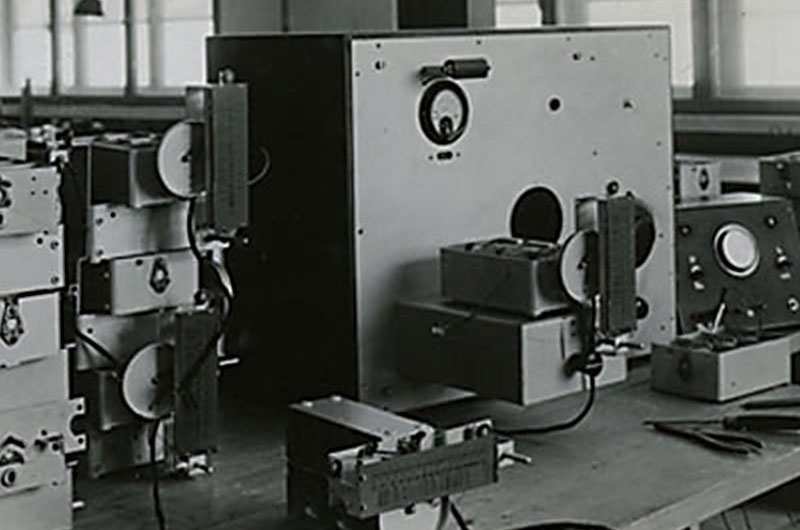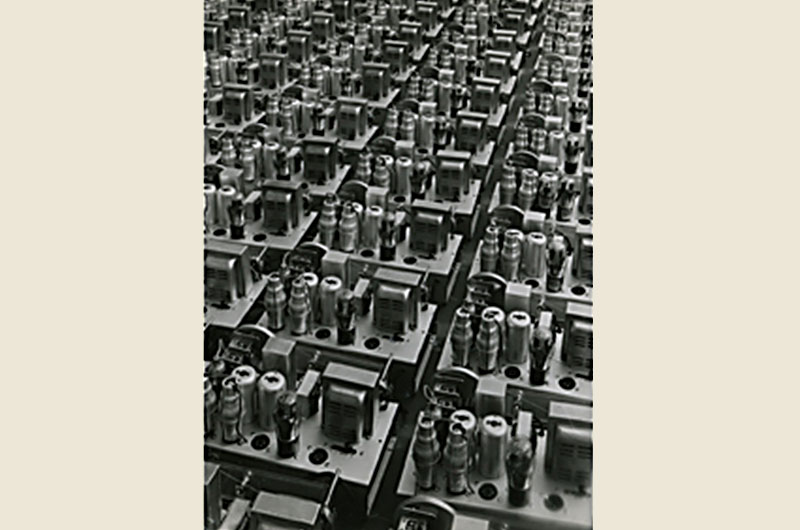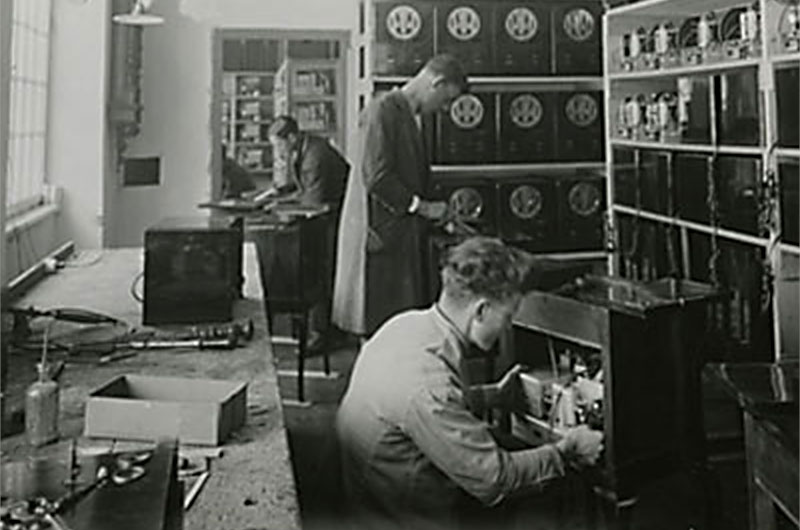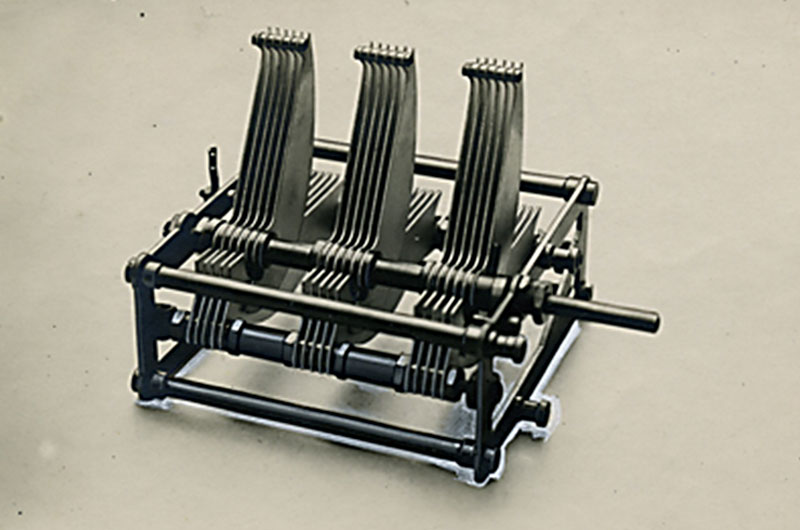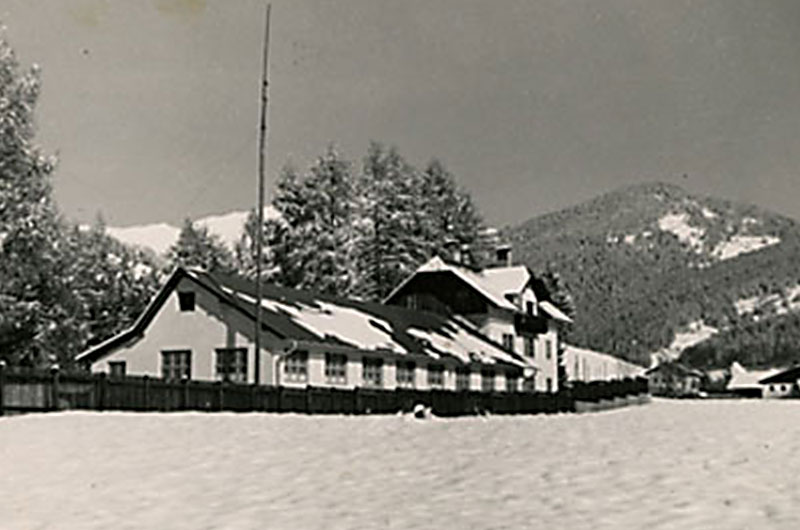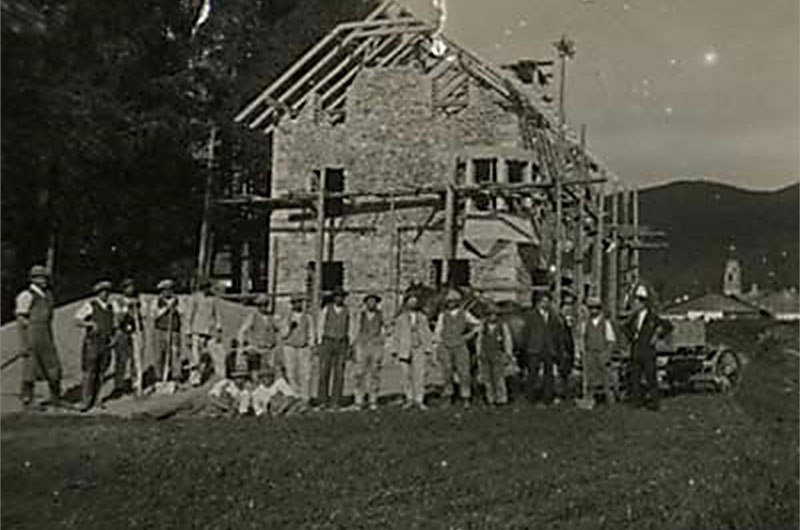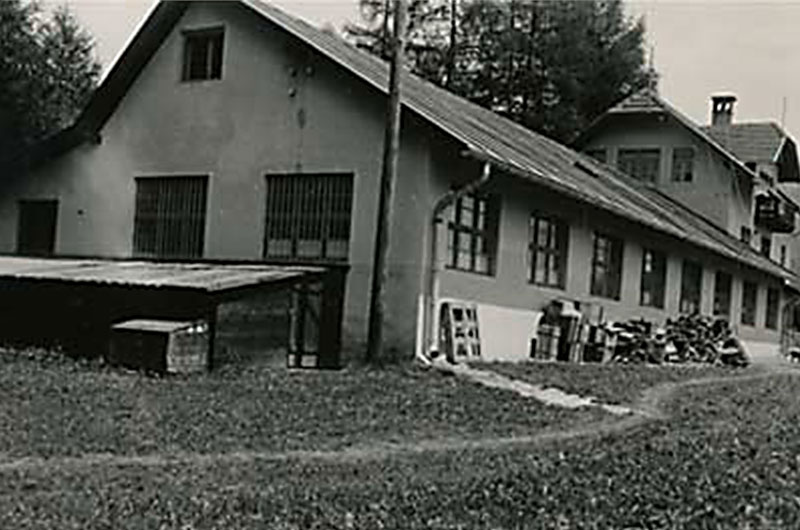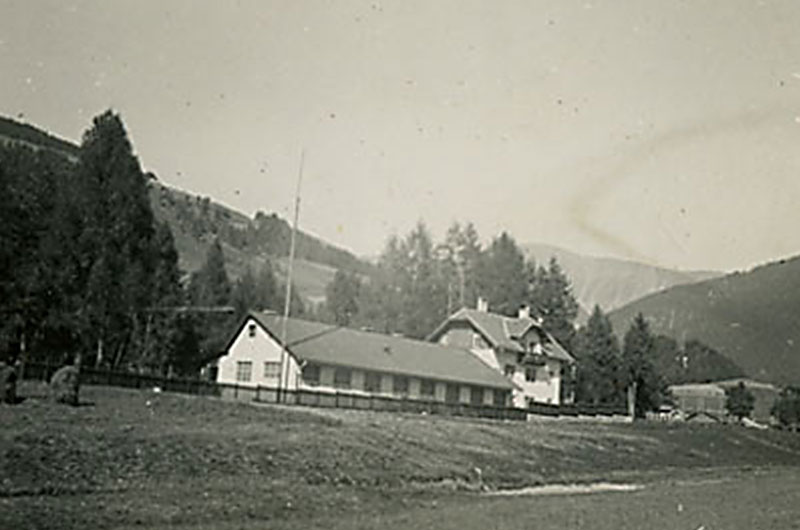“Unda Società per la Fabbricazione di Apparecchi di Meccanica Fine” was established on August 22, 1925, by a young 23 year-old, Max Glauber, with a starting capital of 75,000 Italian lire.
The factory, with its initial 15 employees, was located at Dobbiaco, a little village in the province of Bolzano, in one of the most charming valleys of the Dolomites. Thus, at the dawn of the new radio communication technology, in the heart of a fir wood at about 3750 ft. above sea level, one of the first companies in the field was born. In fact, the first construction license bears number 4.
Known for the manufacture of high precision instruments, from the very beginning it became a leader in the production of spare parts and accessories for radios, such as: semi-variable rheostats, counter capacitive and counter micro-phonic tube sockets, switches, neutral transformers, rheostats, IF transformers both for screened and unscreened tubes, etc.
The company stood out especially for the production of low reactance variable condensers, which it built during 1925 and 1930, and exported especially to France, The Netherlands, Belgium and Switzerland. The precision in manufacture, the care in product-finish, combined with a competitive price on the market brought the Company to high levels of acceptance, able to compete successfully with the biggest Italian and American industries. Unda, having achieved widespread success among private radio hams as well as with companies who built radios, started its own assembly line for the production of receiving sets.
At the 1926 Milan Trade Fair, alongside the most famous radio producing companies, such as Philips, Allocchio Bacchini, Siti, Compagnia Marconi, Zamburlini, Seibt, etc. also present was Unda with its name and products, which stood out among the best.
From the very beginning Max Glauber entrusted the merchandizing of his products, with the motto “the reliable brand name”, to the sales organization Th. Mohwinckel of Milan, already an agent for several German manufacturers of radios and insulating materials used in wireless telephony and telegraphy, resulting in a successful collaboration between the two firms and a friendship between the two families lasting to this day.
In 1927 at the Milan Trade Fair, Unda exhibited a complete assembly kit to build a neutrohet receiver and a low-frequency amplifier. Unda was able to keep abreast of the constant developments in the electronic field in those years, and in 1928 it came out with the first single tuning control superhet.
The first National Radio Trade Show was inaugurated on October 10, 1929 at Palazzo della Permanente in Milan, under the auspices of A.R.I. (Associazione
Radiotecnica Italiana). Among the 21 exhibitors present, was Unda, introducing, on that occasion, its first AC operated superhet. In 1930, at the Second National Radio Trade Show Unda exhibited, in addition to its well-known parts and accessories, a splendid 8-valve receiver, in an elegant walnut console cabinet, which, thanks to a mighty push-pull tubes low-frequency amplifier, reached a 5W output!
In 1932, the Amonn brothers from Bolzano became partners of Unda with limited majority. Walter Amonn became President of the Board of Directors and Max Glauber became Managing and Technical Director. The corporate name was changed into “UNDA RADIO S.AG.L.” (a company with limited liability). By increasing the Company’s capital to Lit. 500.000, Unda was able to expand by building a manufacturing wing, and to make other choices, such as to abandon the manufacture and sale of accessories and to concentrate instead on producing complete receivers. Thus, that same year, at the Third National Radio Trade Show, Unda introduced its single tuning control – 8 tubes superhet,the model M.U.18.
In 1932, at the Fourth National Radio Trade Show, Unda introduced the first superhet with automatic volume control (AVC), the dome-shaped receiver M.U. 60, followed the year thereafter, by models M.U. 61 and M.U. 62 with the same chassis. The M.U.61 was a radio-phonograph console, while the M.U. 62 was an unusual receiver built inside a coffee table.
In the new factory, an assembly line was organized which resulted in 50 finished radio sets per day. Most components were also manufactured in house, such as screws, loudspeakers, cabinets, etc. The production line went through all the various stages to the final inspection.
In the third number of the trade journal “Radio Industria”Giordano Bruno Angeletti wrote about the various stages of the assembly line and final inspection of a radio set in the new Unda factory.
Meanwhile, in 1933, a project sponsored by the Fascist Government since 1930, became a reality. The Italian Parliament and Senate approved law no. 791 for the establishment of the Ente Radio Rurale. This public agency was born out of State necessity to expand radio transmissions, particularly to schools and the countryside. The Communications Ministry published a competition to set the technical characteristics and qualifications necessary for the rural radio, followed by another competition directed to radio manufacturing companies to establish which type of radio should be produced. Of the eighteen competing companies only eleven were chosen by the Technical Department of the Communications Ministry to build the chosen model. Among these eleven was Unda, who subsequently became one of the biggest suppliers to Ente Radio Rurale. As a matter of fact, it was the only company who produced as many as seven different models.
In August 1934 the Undersecretary of the Agriculture and Forests Ministry, Arturo Marescalchi, visited the factory at Dobbiaco,where, shown around by Max Glauber, the Amonn brothers and Theddy Mohwinckel, he remained a whole day.
Thus the Minister had a chance to observe all the production phases of the Radiorurale radio sets, and had a preview of the 1934-1935 models which would be shown at the Sixth National Radio Trade Show. After his visit, in an interview published in “Radio Industria” he stated: “….in the heart of a fir wood, there is a very modern factory which could be well located in the centre of a metropolis……it is not only among the first, but among the best…….”
At the Sixth National Radio Trade Show, held between September 22 and 30, 1934, the company celebrated its tenth anniversary of activity, by presenting, for the first time, the series Tri-Unda,a three band receiver (LW, MW and SW) and precisely: the Tri Unda 5, a midget receiver with a 5 tube superhet circuit, also available in the console version and named Tri Unda 55: the Tri Unda 7, a midget receiver with a 7 tube superhet circuit, also available in the console version and named Tri Unda 77.
An innovative detail upon which the company put great emphasis for the Tri Unda 7 model, was the “detailed” tuning dial, which, in orderly and methodical fashion, grouped together the names of as many as 140 stations.
It had become a tradition to introduce the new products at the annual National Radio Trade Shows. So in the Seventh edition, Unda presented for the first time the Quadri Unda 100 model, an impressive and luxurious 10 tubes radio-phonograph combination (3x6D6-6A7-75-56-3×42-5Z3) for reception of 4 radio waves, long, medium, short and very short. Built inside a console cabinet equipped with special acoustic devices and two loudspeakers, it reached an astonishing 18W output. This model too emphasized the tuning dial with its 164 station names.
1925-1935 Bauhaus era
Bauhaus establishes itself as the first school of industrial design; simple, geometrical lines are abandoned in favour of experimentation with new materials, such as chromium-plated metal, bent tubes, which give shape to the object, laying the basis for the philosophy of design for the next decades.
The Radio and Design
This decade brings the greatest technical innovations, accompanied by a significant construction and aesthetic evolution. The radio set becomes one entity, by incorporating in one unit the power transformer as well as the smaller loudspeaker. The manufacturing companies, increased in number by now, offer receiving sets in harmony with the aesthetic tastes of the time (dome, cathedral, or chest shaped cabinets), easy to use by anyone. New materials, in particular bakelite, are introduced. Bakelite was ideal for shaping elaborate and complex forms even in large scale productions.
